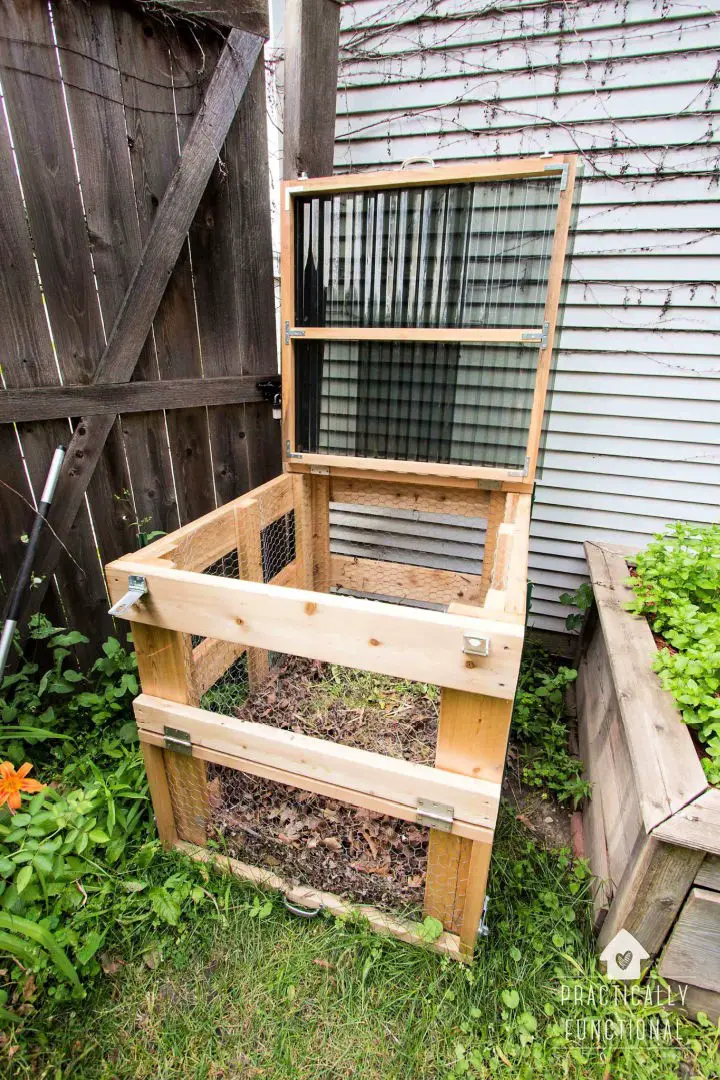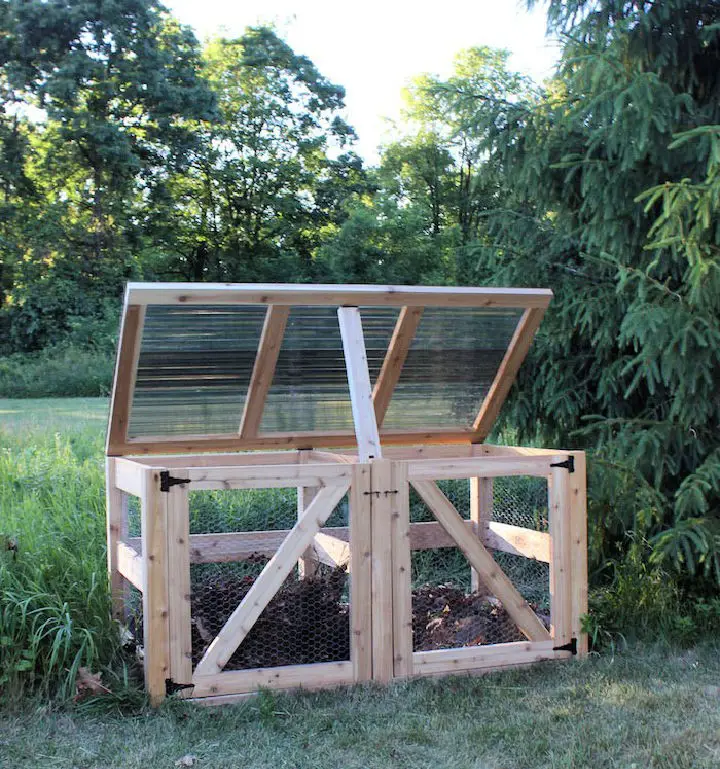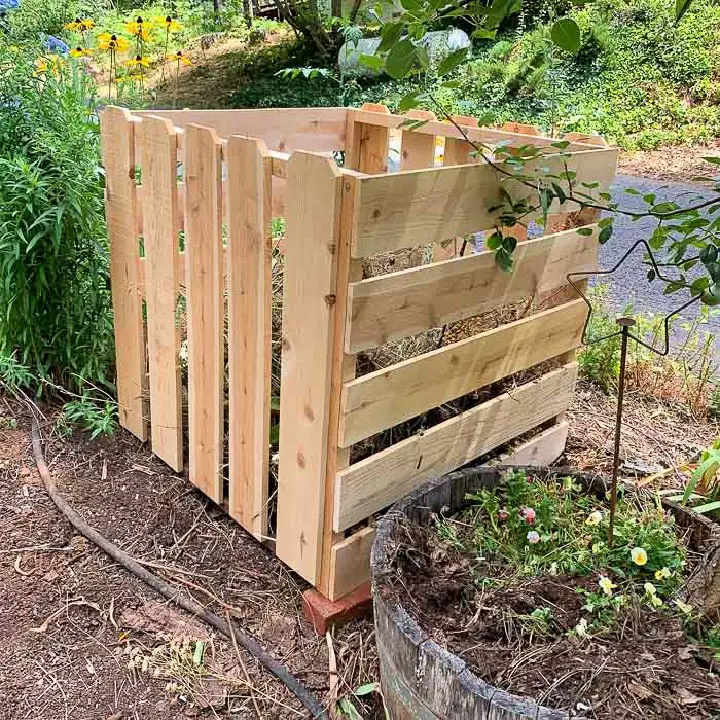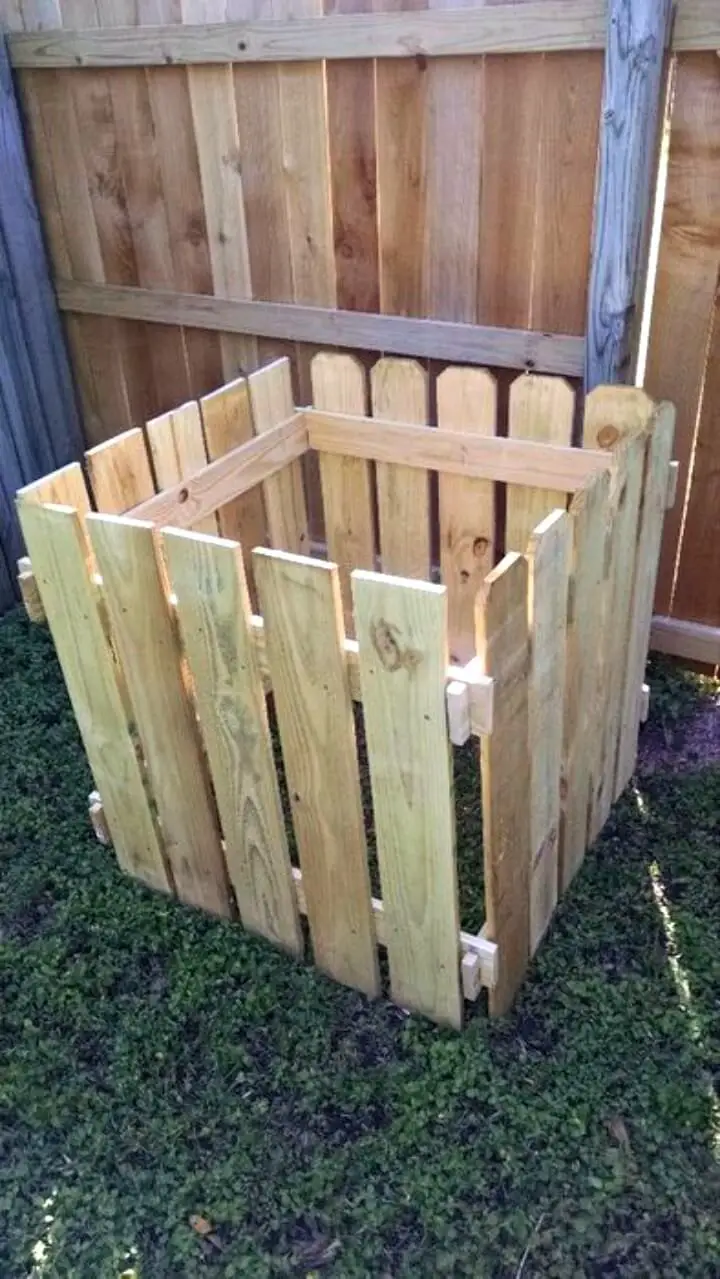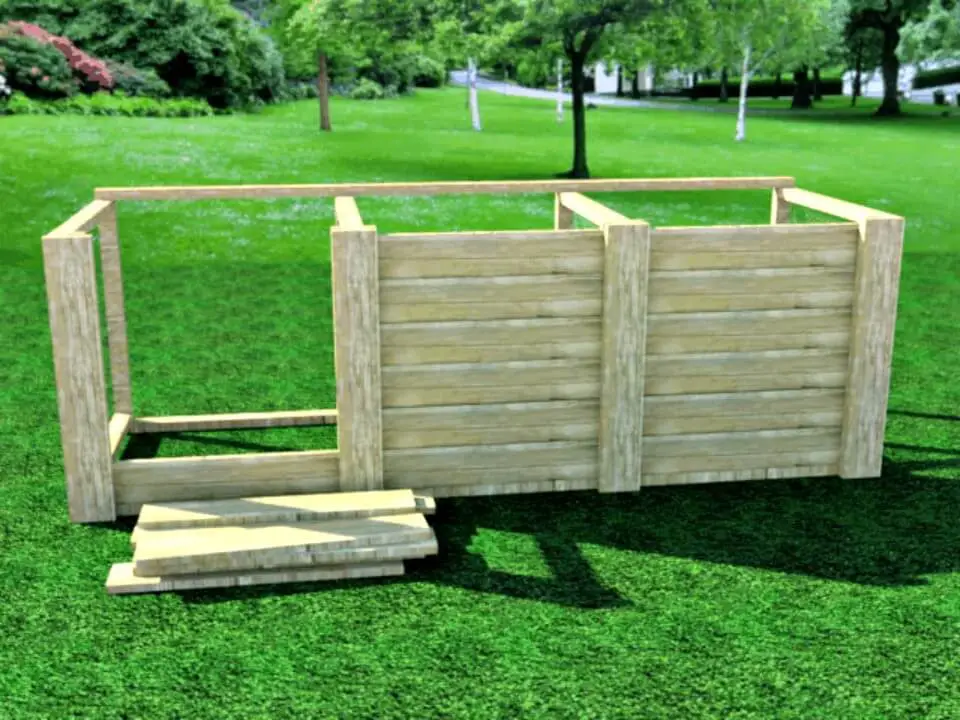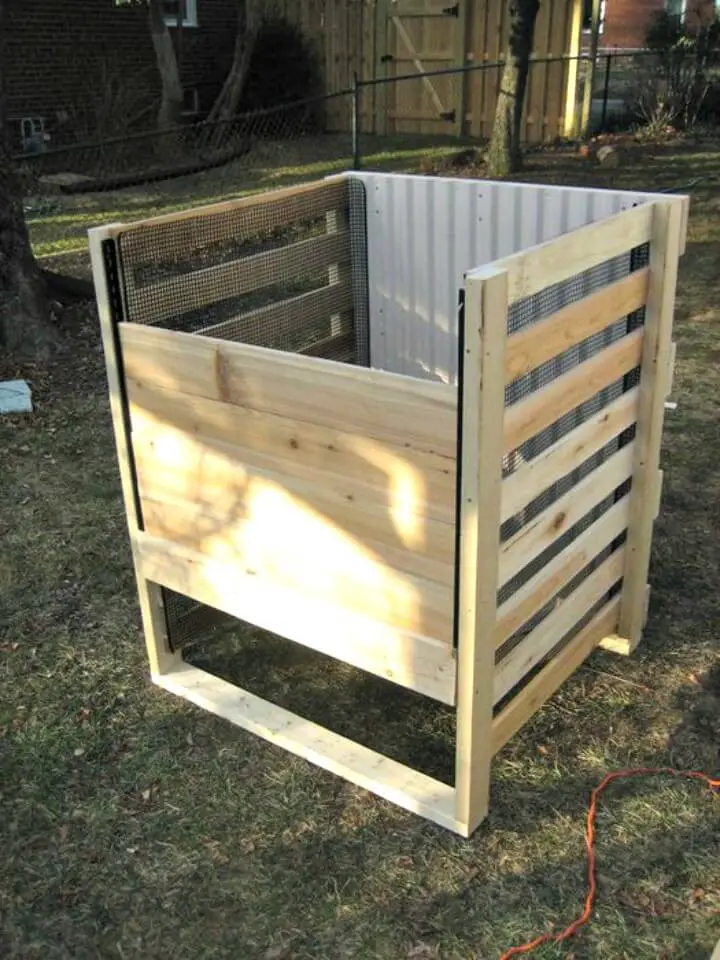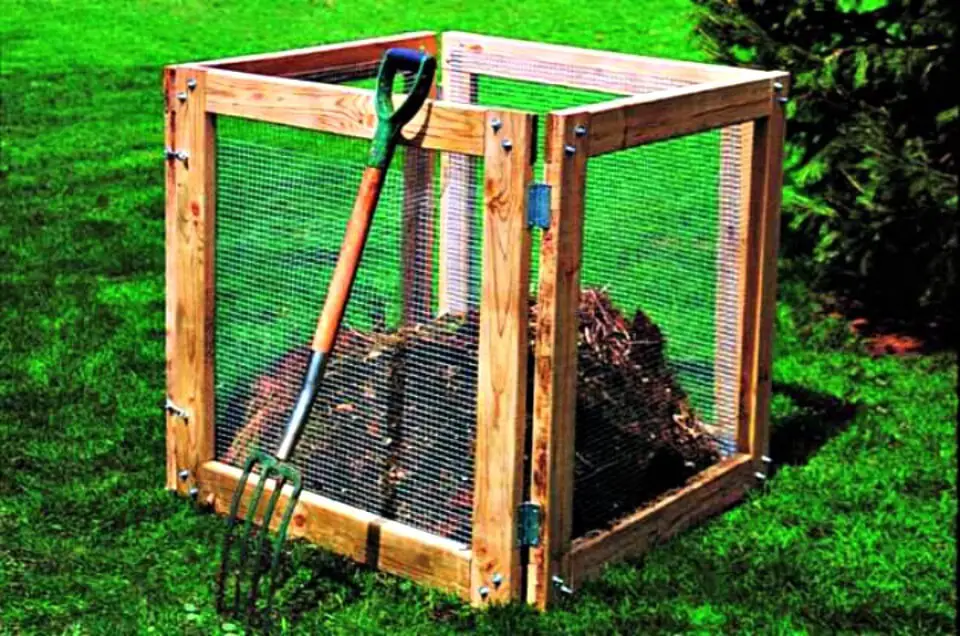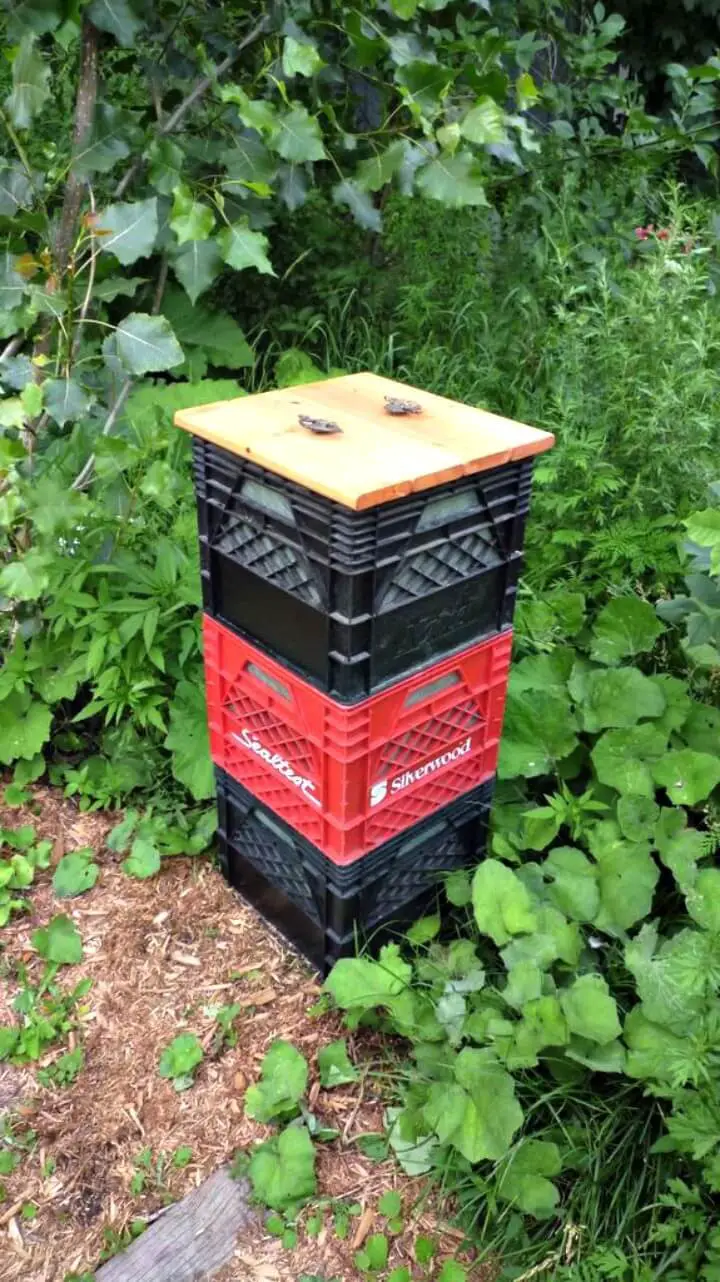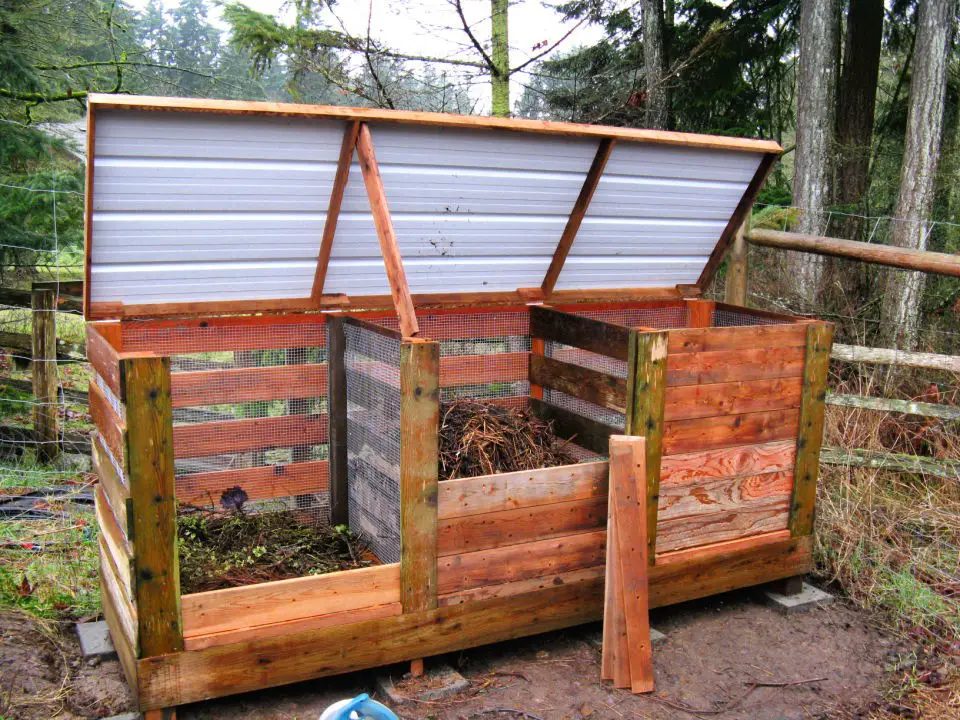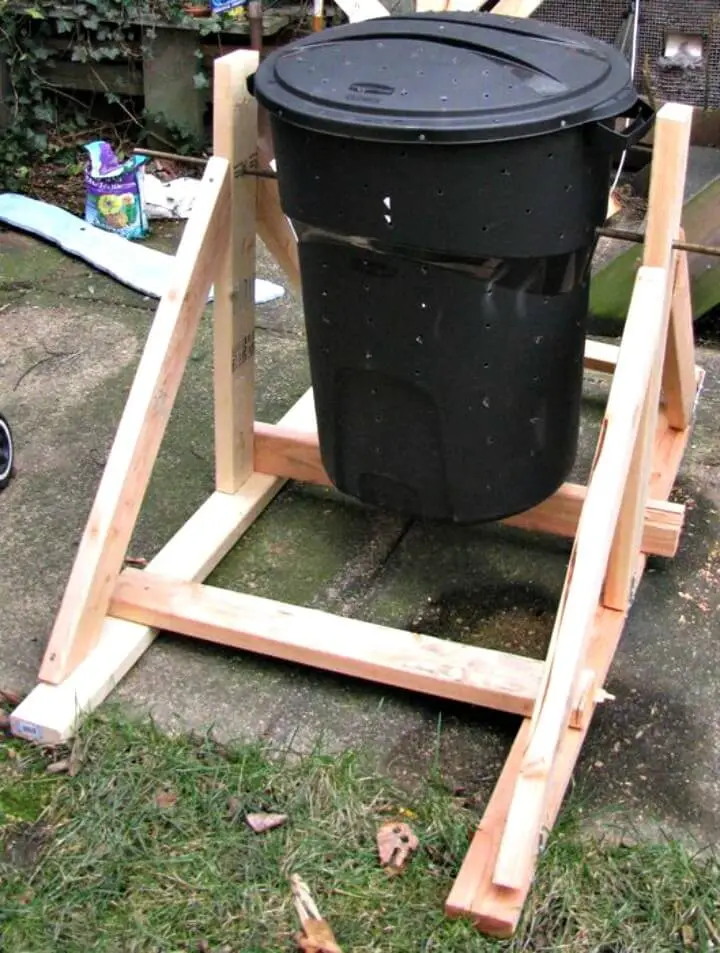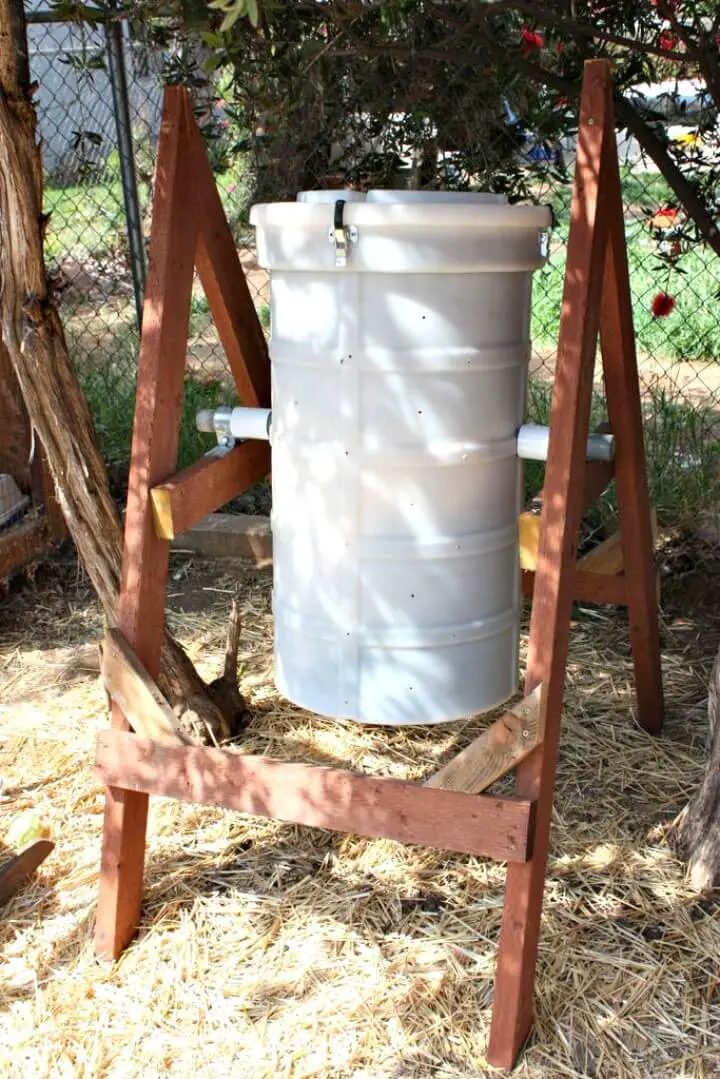
Creating a DIY compost bin is a simple yet effective way to manage kitchen and garden waste while adopting an eco-friendly lifestyle. Not only is it cost-effective, but it also enriches the soil, making it ideal for gardening enthusiasts seeking a greener approach. With numerous plans available online, you can easily find a design that suits your space and needs. This guide aims to provide straightforward instructions, guiding you through every step of the process from start to finish.
Introduction to Composting
As the world continues to grapple with environmental challenges, composting emerges as a crucial natural process that converts organic waste into nutrient-rich fertilizer for the soil, ultimately enriching its quality and fertility. By adopting this eco-friendly approach, individuals can effectively recycle kitchen scraps and yard waste, thereby minimizing the strain on landfills and curbing greenhouse gas emissions.
What is Composting?
Composting is the process of recycling organic materials like food scraps, yard trimmings, and other biodegradable waste into a nutrient-rich substance that can replenish the earth’s natural cycles. This decomposition process transforms these materials into a valuable resource known as compost, often affectionately referred to as ‘black gold’ among gardening enthusiasts. At its core, composting is about revitalizing soil health by adding this rich, earthy matter back into the earth, ultimately enhancing soil structure and fertility.
Why Compost?
Composting’s advantages extend far beyond just minimizing waste. When incorporated into soil, it acts as a natural reservoir, retaining moisture and reducing the need for irrigation in both large-scale agricultural operations and small-scale home gardens. This process also introduces vital nutrients and beneficial microorganisms to the soil, fostering healthier plant growth. Furthermore, composting reduces our reliance on chemical fertilizers, which have been linked to environmental concerns such as waterway pollution and greenhouse gas emissions resulting from their production and transportation.
The Environmental Impact
Composting plays a crucial role in mitigating environmental concerns. One of its most significant benefits is reducing the amount of organic waste sent to landfills, where it would otherwise decompose anaerobically and release methane – a potent greenhouse gas. By choosing composting over landfill decomposition, we promote aerobic processes that have a much lower impact on the atmosphere. This simple yet effective approach can make a substantial difference in our collective efforts to combat climate change.
Getting Started with Composting
Starting your composting journey requires a few key elements: a designated space for your compost pile or bin, and a mix of ‘greens’ (nitrogen-rich materials like food scraps) and ‘browns’ (carbon-rich materials like dry leaves). The secret to successful decomposition lies in striking the perfect balance between these two types of materials, combined with adequate moisture and aeration. This harmonious blend sets the stage for waste transformation into nutrient-rich compost over time.Composting is more than just a hobby or a way to reduce waste – it’s a vital component of sustainability. By embracing this eco-friendly practice, you’ll not only be doing your part for the environment but also cultivating healthier soil and supporting local ecosystems. As composting becomes an integral part of your lifestyle, you can expect to see benefits that extend far beyond your own garden or community, all the way to the planet as a whole.
Why Build Your Own Compost Bin?
Creating a personal compost bin offers numerous benefits that positively impact both your garden and the environment. As you dive into this DIY project, here’s a closer look at why it’s an astute decision:
Firstly, composting helps significantly reduce waste by diverting kitchen scraps and yard waste away from landfills, subsequently minimizing one’s carbon footprint. This eco-friendly approach fosters a healthier planet.
Secondly, the nutrient-rich compost enhances soil quality, providing plants with essential nutrients for growth. This natural fertilizer promotes robust, thriving vegetation, ultimately resulting in a more lush and vibrant garden.
Furthermore, composting saves money by eliminating the need to purchase commercial fertilizers. This DIY approach keeps gardening expenses at bay, allowing you to focus on other aspects of your green thumb endeavors.
In addition, building and utilizing a compost bin encourages a sustainable lifestyle by fostering a deeper connection with the environment. It’s a practical step towards living in harmony with nature, promoting growth, and renewal.
Lastly, constructing a compost bin is an easy and customizable process that can be tailored to fit your specific gardening needs. Whether you have a small patio or a large backyard, there’s a compost bin design that suits your unique situation.
For families, this DIY project offers the added bonus of being an educational opportunity that teaches children about recycling, biology, and the importance of environmental stewardship.
Ultimately, starting your composting journey with a DIY bin is a straightforward yet impactful way to contribute to a healthier planet while enhancing the beauty and productivity of your garden.
Selecting the Right Location for Your Compost Bin
To achieve optimal composting results, it’s essential to choose a suitable location for your compost bin. The spot you select can significantly impact both the decomposition process and the ease with which you can add waste to the bin. In order to maximize the effectiveness of your composting efforts, consider the following factors when selecting the ideal location: the accessibility of the area, the proximity to potential moisture sources, and the level of sunlight the site receives.
Accessibility
When it comes to siting your compost bin, strike a balance between convenience and practicality. Place it close enough to your home that adding kitchen scraps is a breeze, but far enough away that any potential odors are minimized. Consider the route you’ll take to the bin – aim for a path that’s clear and easily navigable in all weather conditions, from sunny days to rainy nights.
Ground Conditions
Position your compost bin on a flat, well-drained surface, allowing any excess moisture to drain freely. This setup prevents waterlogging, which can hinder the decomposition process. Furthermore, direct contact with the soil enables worms and other microorganisms to access the bin, facilitating the breakdown of organic matter.
Sunlight and Shade
To create an optimal environment for decomposition, it’s essential to strike a balance between sunlight and shade. On one hand, moderate levels of sunlight can accelerate the process by warming the compost pile, whereas excessive heat can lead to drying out. To mitigate this risk, incorporating some shaded areas during the hottest part of the day can help maintain a healthy moisture level.
Water Source
Convenience is key when it comes to maintaining your compost bin – having a nearby water source allows for easy moisture addition when needed. Yet, it’s crucial to site the bin thoughtfully to avoid any potential issues that might arise from heavy rainfall. A flood-prone location would be counterproductive, after all. Instead, opt for a spot that provides easy access to water without putting your compost at risk of excessive saturation.
Avoiding Pests
When selecting a location for your outdoor waste receptacle, aim for a spot that’s at a reasonable distance from both your residence and your neighbor’s property. This strategic placement will help reduce the likelihood of attracting unwanted pests. Furthermore, ensure the bin is equipped with a secure lid and receives regular maintenance to effectively deter rodents and insects.
Environmental Considerations
When choosing a spot for your compost bin, remember to factor in its environmental impact. Opt for a location that’s not near water sources to prevent nutrient-rich runoff from polluting nearby bodies of water. Additionally, consider the prevailing wind direction to steer any potential odors away from living areas and towards more acceptable locations, such as a designated composting area or a garden bed. By taking these factors into account, you can pinpoint an ideal location for your compost bin, making the process not only eco-friendly but also enjoyable and productive.
How to Make a Compost Bin: 3 Bin Compost System Plans
Composting is an excellent way to reduce household waste while also creating nutrient-rich soil amendments for your garden. A well-designed compost bin system can help you manage organic matter throughout its decomposition process, providing a steady supply of valuable nutrients. This guide will outline the construction of a three-bin composting setup, which enables multiple stages of composting to occur concurrently, making it an efficient and versatile addition to any gardening routine.
Step by Step DIY Compost Bin
To create a DIY compost bin that’s sturdy and durable, follow this step-by-step guide. Begin by gathering the necessary materials and tools. You’ll need pressure-treated wood for the corner posts, horizontal rails, and slats; hardware cloth for ventilation and containment; and decomposed granite to secure the structure. Additional tools required include a saw, drill, and staple gun.To start building, dig eight holes for the compost bins’ frames. Cut the 4x4s to the desired height and add a channel down the center for adjustable slats on the front posts. Secure each post in its hole using decomposed granite and ensure they’re level and plumb.The next step is to build the structure. Use hardware cloth as the back panel for ventilation, securing it with staples. Connect the 2×4 rails from the back to the front posts, creating a top frame that holds the structure together. Ensure these are level and securely attached.For the front adjustable panels, insert 1x4s horizontally into the slotted design of the front posts. These can be adjusted up or down based on the compost’s stage and needs. This flexibility is key to managing a multi-stage composting process efficiently.To finish the bin, enclose the sides and dividers between each bin with hardware cloth, securing it in place with staples. Construct lids using 2×2 frames and hardware cloth, attaching them to the back of each bin with hinges. This allows for air and rain entry while keeping pests out. With the front slats in place, you can easily adjust the size of the opening based on your compost’s stage and needs.
Tips for Maintenance and Usage
To facilitate the decomposition process, it’s crucial to regularly aerate your compost pile by turning the contents. This simple act can significantly accelerate the breakdown of organic matter into a nutrient-rich soil amendment. Additionally, striking an equilibrium between ‘green’ and ‘brown’ materials is vital for maintaining a healthy compost ecosystem. This balance ensures that microorganisms can thrive, efficiently converting waste into valuable compost. Furthermore, monitoring moisture levels is essential to prevent anaerobic conditions, which can hinder the decomposition process. Aim for a consistency similar to a damp sponge, as this will foster an ideal environment for microbial activity.
Video Tutorial
To further enhance your understanding of building this compost system, I recommend supplementing your reading with a step-by-step YouTube tutorial that complements the written guide provided here. The visual illustrations and real-life examples will not only help clarify each step but also provide a tangible representation of the process, allowing you to gauge your progress and ensure accuracy. As you embark on constructing this three-bin compost system, remember that it may seem intimidating at first, but with these straightforward steps, you’ll find the experience rewarding and the benefits to your garden substantial.
Composting Dos and Don’ts
To ensure a thriving compost pile, it’s essential to strike the right balance between what you include and what you exclude. A well-crafted composting system relies on a harmonious blend of organic materials, carefully curated to foster a nutrient-rich environment for microorganisms to flourish.
Dos:
To create a thriving compost pile, aim for a balance of 50% nitrogen-rich ‘greens’ (such as fruit and vegetable scraps) and 50% carbon-rich ‘browns’ (like dried leaves or shredded newspaper). To facilitate decomposition, chop or shred your waste into smaller pieces before adding it to the pile. For optimal decomposition, layer your materials in a brown-green-brown pattern, with the browns forming the base of each layer. Regularly turning the pile will help aerate it and speed up the composting process. Maintain the right level of moisture by ensuring the pile is damp but not soggy. If necessary, add water to keep things consistent. Finally, once your compost has reached a dark, crumbly consistency with an earthy aroma, it’s ready for use in your garden, where it can help improve soil health.
Don’ts:
To maintain an efficient and healthy composting process, it’s essential to follow some simple guidelines. Firstly, refrain from adding meat and dairy products as they can attract pests and create unpleasant odors during decomposition. Additionally, ensure that all plant materials are free of disease, as the risk of spreading pathogens to your garden is high when using composted matter. Furthermore, exclude invasive weeds with mature seeds, as they may survive the composting process and sprout in your garden, potentially causing unwanted growth. Pet waste should also be avoided, as it can contain harmful pathogens that pose a threat to human health. Finally, avoid adding oily foods to your compost pile, as they can take an extended period to break down and attract pests. By adhering to these guidelines, you’ll be able to create a nutrient-rich soil enhancer through the composting process.
Maintenance and Troubleshooting for Your DIY Compost Bin
To ensure a consistent flow of nutrient-rich compost, it’s crucial to keep your compost bin in optimal condition. This involves regular maintenance and being aware of potential problems. By following these best practices, you’ll be able to overcome common obstacles and produce high-quality compost.
Regular Maintenance
When setting up your compost bin, it’s essential to consider its location. Position it in a spot that provides easy access while keeping it far enough from your home to avoid any unpleasant odors or pest issues. This will help you maintain a harmonious balance between the green (nitrogen-rich) and brown (carbon-rich) materials within. To facilitate decomposition, ensure you’ve got a mix of both types. For larger items, chop or shred them to speed up the process. Keeping the compost bin at the right level of moisture is crucial – not too wet, but not dry either. This will prevent odors and foster healthy decomposition. Finally, don’t forget to turn your compost regularly to introduce air, which accelerates the entire process.
Troubleshooting Common Issues
When dealing with odors in your compost, it’s often a sign that the balance is off. To counteract the strong smells from overly wet and smelly greens, try adding more brown materials to the mix. Pests can also be a nuisance, so make sure to secure your bin with a lid or some hardware cloth to keep them out. Additionally, avoid adding meat, dairy, or oily foods as they tend to attract pests. If you’re experiencing slow decomposition, it might be due to a lack of green materials or insufficient moisture in the pile. To speed things up, try increasing the amount of green materials and ensuring the pile is consistently moist. On the other hand, if your compost is getting too wet, simply cover your bin with a lid or tarp to prevent excess moisture from entering and maintain a consistent temperature. By following these tips, you can keep your compost bin running smoothly and trouble-free.
Advanced Composting Techniques
As you delve deeper into the world of composting, you’ll discover that refining your skills can significantly impact the speed and quality of your final product. To take your composting to the next level, consider implementing these sophisticated strategies that can streamline decomposition and yield a superior end result.
Vermicomposting: The Power of Worms
The art of vermicomposting involves harnessing the power of red wigglers to transform organic waste into a nutrient-rich compost. This eco-friendly process is well-suited for indoor composting or small spaces, where space may be limited. By feeding the worms a diet of food scraps and bedding materials, they produce castings that are an excellent natural amendment for soil.
Bokashi: Fermentation at Its Finest
Fermenting food waste in a controlled environment is at the heart of bokashi composting, a unique process that allows for the breakdown of meat and dairy products alongside other organic matter. By using a specialized inoculant and a sealed container, anaerobic fermentation occurs, speeding up the decomposition process. Once complete, the resulting material can be incorporated into garden beds or added to traditional compost piles for further processing.
Hot Composting: Turning Up the Heat
Hot composting offers a hastened approach to decomposition, necessitating meticulous monitoring of moisture levels, oxygen circulation, and the delicate balance between carbon-rich materials and nitrogen-rich components. As the pile reaches scorching temperatures, it can effectively eliminate weed seeds and pathogens, making it an excellent choice for gardeners seeking to produce high-quality compost in a shorter timeframe.
Sheet Mulching: Composting in Layers
Sheet mulching, also referred to as lasagna gardening, is a simple yet effective technique for transforming grassy areas into thriving garden beds. By layering organic materials directly on the ground, this method allows you to build soil fertility and structure over time, ultimately creating a nutrient-rich environment that fosters healthy plant growth.
Trench Composting: Direct-to-Garden Approach
When it comes to organic waste management in gardening, trench composting stands out as a game-changer. By burying materials between rows of plants, this no-turn method allows for decomposition that directly enriches the soil where your crops will thrive. The result is a self-sustaining ecosystem where nutrients are cycled back into the garden, promoting healthy plant growth and minimizing waste. As you explore advanced composting techniques like trench composting, you’ll gain the flexibility to adapt your practices to suit your unique gardening needs, ultimately leading to a more resilient and productive outdoor space.
Compost Use in Gardening
To maximize the benefits of using compost in your garden, you can start by harnessing its power to enrich the soil and foster healthy plant growth. This natural resource is a game-changer for gardening enthusiasts, as it not only helps improve soil structure but also provides essential nutrients for your plants. With these simple steps, you can unlock the full potential of compost and take your gardening skills to the next level.
Knowing When Compost is Ready
The hallmark of mature compost is its distinct appearance and aroma. Typically, it’s a deep brown or black color, with a crumbly texture that’s reminiscent of soil. One of the most telling signs of maturity is the absence of any recognizable original materials, such as vegetable scraps or leaves. Additionally, mature compost no longer emits heat, indicating that it has reached a state of microbial stability and is ready to act as a nutrient-rich amendment in your garden.
Timing for Using Compost
When incorporating compost into your garden, timing is crucial. The ideal seasons for application are spring, summer, and autumn, as these periods allow for optimal microbial activity. If the compost isn’t fully matured, it’s best to apply it in the fall, allowing microorganisms to break down organic matter without competing with plants for nitrogen. This approach enables a more effective nutrient release, ultimately benefiting plant growth.
Improving Soil with Compost
When incorporating compost into your soil, it’s often most effective to mix it into the top layer. This simple action can have a profound impact on the overall quality of your soil. By blending compost with sandy soil, you can help retain moisture and nutrients that might otherwise be washed away. In contrast, adding compost to compacted clay soil can help loosen its dense structure, making it easier to work with. And in all cases, the addition of organic matter through compost can provide a vital boost to your soil’s overall health.
Mulching with Compost
Compost’s versatility extends beyond enriching soil for garden beds. Its potential as a natural mulch for trees and shrubs is often overlooked. By applying compost around these plantings, you can effectively regulate soil moisture levels, curb weed growth, and gradually release essential nutrients to the plants. This trio of benefits not only enhances their overall health but also minimizes maintenance requirements.
Compost in Containers
Combine equal parts of compost and potting soil to create an ideal growing environment for your container-grown plants. This 1:1 ratio blend offers a nutrient-rich foundation that promotes healthy plant growth.
Direct Application for Vegetables
When cultivating vegetables, don’t underestimate the power of compost. This natural resource is especially beneficial for heavy feeders like tomatoes, as it offers a slow release of essential nutrients that promote healthy growth. By scattering mature compost around plant bases, you’re not only enriching the soil but also amplifying its health and yield. Furthermore, incorporating compost into your gardening routine can have a profound impact on overall garden performance, so be sure to apply it wisely for optimal results.
Sustainability and Impact of Composting
Beyond enriching soil for our gardens, composting is a vital component of environmental sustainability. As we delve into its far-reaching effects, we can gain a deeper appreciation for the importance of this practice in preserving the natural world.
Reducing Food Waste
The global scale of food loss and waste is staggering, with massive amounts going unutilized every year. Composting plays a crucial role in addressing this issue by turning organic waste into a valuable resource rather than allowing it to contribute to the ever-growing problem of landfill waste. This approach not only preserves precious landfill space but also significantly reduces the production of methane, a potent greenhouse gas that forms during the anaerobic decomposition of organic matter in landfills, thereby contributing to climate change.
Climate Change Mitigation
In a crucial effort to mitigate climate change, composting emerges as a vital strategy. By redirecting organic waste from landfills and transforming it into nutrient-rich soil, we can significantly decrease the release of greenhouse gases into the atmosphere. A notable benefit of composting is its ability to curb methane emissions, which have a substantially greater impact on climate change than carbon dioxide. As a result, embracing composting as a daily practice not only reduces our reliance on landfills but also contributes meaningfully to the global effort to combat climate change.
Enhancing Soil Health
Composting plays a vital role in enhancing soil quality by improving its structure, fertility, and water-holding capacity. This natural process eliminates the need for synthetic fertilizers that can harm the environment. As a result, healthier soils promote more vigorous plant growth, granting crops greater resistance to pests and diseases. Moreover, this resilience enables plants to better withstand extreme weather conditions, ultimately benefiting both farmers and consumers.
Promoting Biodiversity
The synergy between healthy soils and their microorganism inhabitants fosters an environment rich in biodiversity. The introduction of compost, with its diverse array of microbes, creates a thriving ecosystem that in turn supports a broad spectrum of plant and animal life, ultimately contributing to the overall well-being of our ecosystems.
Water Conservation
Incorporating compost into your soil can have a profound impact on its water retention capabilities, potentially leading to a significant reduction in irrigation demands. This advantage is especially valuable in regions vulnerable to drought, where every drop of water counts.
Circular Economy
In a departure from traditional linear practices, composting embodies the core principles of a circular economy, where waste reduction and resource reuse become the guiding tenets. This approach eschews the ‘take-make-dispose’ mentality in favor of a regenerative model that prioritizes the continuous utilization of resources.
Community Engagement
By leveraging community-driven composting initiatives, we can collectively promote sustainable practices and environmental stewardship at a grassroots level. These programs have the added benefit of reducing waste collection costs, fostering a sense of shared responsibility, and empowering individuals to take action towards a more sustainable future. By embracing the power of composting, we can make tangible strides towards creating a healthier planet for generations to come.
FAQs On DIY Compost Bin
Reducing waste and enriching your garden soil can be achieved by constructing a compost bin. To facilitate this process, we’ve gathered some commonly asked queries to guide you in embarking on your composting adventure.
What materials can I compost?
When it comes to composting, there are certain materials that are ideal for the process. These include kitchen scraps such as fruit and vegetable peels, coffee grounds, and eggshells. Additionally, yard waste like grass clippings, leaves, and small branches can be added to the mix. Even other organic materials like newspapers, cardboard, and non-glossy paper can be included. It’s important to note that certain materials should be avoided when composting, as they can attract pests or cause unpleasant odors. These include meats, dairy products, diseased plants, and pet wastes.
How do I choose the right location for my compost bin?
When selecting a location for your compost bin, consider placing it in a spot that offers ideal conditions. Aim for an area that receives partial shade to full sun, as this will help regulate temperature fluctuations. Additionally, ensure the site has proper drainage to prevent waterlogging and anaerobic conditions. It’s also important to choose a location with easy access for adding materials and proximity to a water source, allowing you to maintain optimal moisture levels throughout the composting process.
How can I keep pests away from my compost bin?
To optimize your composting process, consider utilizing a compost bin with a secure lid or cover that effectively seals the contents. The bin should have no significant gaps or openings that might allow pests or odors to infiltrate. When adding organic matter, refrain from incorporating meat, dairy, or oily foods as they can create unpleasant odors and attract unwanted critters. Instead, bury food scraps beneath a layer of yard waste or soil to maintain a balanced ecosystem. Finally, remember to regularly turn the compost pile to facilitate the incorporation of new materials and ensure a harmonious decomposition process.
How often should I turn my compost?
To foster a healthy and efficient composting environment, regular aeration is crucial. Aim to turn your compost pile every 7-14 days to introduce oxygen, which accelerates microbial activity and minimizes unpleasant odors. If you’re eager to hasten the composting process, more frequent turning can be beneficial in generating a richer, nutrient-dense final product.
How long does it take for compost to be ready?
Within a span of three to six months, the composting process can reach maturity, contingent upon the type of materials employed, local climate conditions, and regular turning practices. The end product typically exhibits a dark coloration, crumbly texture, and an unmistakable earthy aroma.
Can I compost in winter?
While winter may bring a natural slowdown to the composting process, it’s still possible to keep things going. A key tactic is to insulate your compost bin using materials like leaves or straw, which will help retain heat and maintain microbial activity. Additionally, make an effort to turn your pile every now and then to ensure oxygen levels remain sufficient for decomposition to continue.
What’s the best way to use finished compost?
When it comes to utilizing the fruits of your labor, consider compost as a valuable soil amendment for enhancing garden beds, lawns, or potting mixes. Its rich nutrient profile makes it an excellent addition for promoting healthy plant growth.
By tackling common concerns and misconceptions, our goal is to provide you with a positive and rewarding composting experience. With this in mind, let’s dive into the process and set you up for success.
20 Homemade DIY Compost Bin Plans (How to Make)
Embrace the art of self-sufficiency by crafting your own DIY compost bin, a cost-effective and eco-friendly way to turn household waste into nutrient-rich fertilizer. With over 20 easy-to-follow plans, you’ll be well on your way to creating a homemade compost system that will transform your yard into a thriving oasis.
How to Make a Compost Bin
Turn kitchen scraps and yard waste into nutrient-rich soil using our DIY compost bin guide. Our comprehensive tutorial provides free plans and a cut list that simplifies the construction process, making it accessible to anyone. By following our step-by-step instructions, you’ll create a sturdy, critter-resistant compost bin that promotes airflow and easy access to finished compost. This project is perfect for sustainable gardeners who want to provide their plants with homemade, organic fertilizer.
Build a Double Compost Bins
Reducing your environmental footprint has never been easier or more effective than with home composting. One innovative approach is to employ Rogue Engineer’s double compost bin design, a tried-and-true solution that streamlines the process and yields impressive results. This comprehensive guide, courtesy of Jamison Rantz, empowers DIY enthusiasts to construct their own two-compartment bin, complete with user-friendly features like convenient lids for adding waste and accessible doors for harvesting rich, nutrient-dense compost. By following the detailed materials list, dimensions, and construction steps, even novice builders can achieve a seamless experience. As an added bonus, this design not only enhances soil quality but also helps minimize landfill waste. For those seeking to deepen their understanding of composting’s numerous benefits, exploring educational resources like those offered by the EPA is an excellent starting point.
Easy DIY Compost Bin
Enriching the soil in your garden doesn’t have to break the bank or require extensive DIY expertise. With simple, affordable materials like cedar fence boards and 2x2s, you can create a functional and visually appealing compost bin that’s perfect for recycling kitchen scraps and yard waste into nutrient-rich fertilizer. By following this straightforward guide from Flower Patch Farmhouse, you’ll be able to construct a reliable composting system using minimal tools and effort. This eco-friendly approach allows you to contribute to a greener environment while also enhancing the overall health of your garden.
Making a Wooden Compost Bin
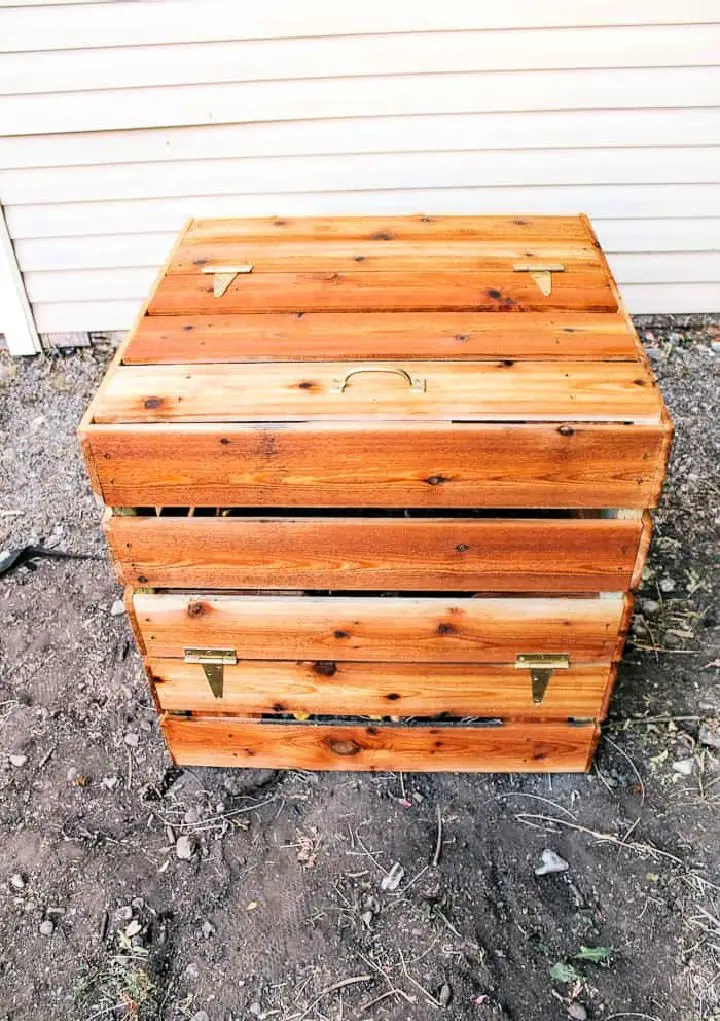
Composting is an eco-friendly way to enhance your garden while minimizing waste. With At Home with Ashley’s easy-to-follow guide, you can create a DIY wood compost bin in just a few hours for under $80. This small-scale project requires minimal investment and yields a functional tool that helps maintain a healthy soil balance. The benefits of composting extend beyond your garden to the environment at large, making it an excellent choice for sustainable gardening.
Easy and Modular DIY Compost Bin
Constructing a compost bin is a straightforward project that offers long-term benefits for your garden and the environment. By following detailed guidance from Instructables, you can build a low-cost, modular compost bin based on a refined design passed down through generations. This easy-to-assemble bin is designed to adapt to your growing composting needs while promoting sustainable waste management practices. It’s an ideal solution for eco-conscious individuals looking to reduce their carbon footprint and cultivate rich, homemade compost in their gardens. With clear instructions and helpful tips, you can create a functional compost bin that suits your space and composting style.
Make Your Own Compost Bin
Enriching your gardening experience doesn’t have to rely on store-bought compost solutions. By constructing a 3-bay compost bin using readily available materials and simple instructions, you can create a functional and space-efficient tool for nurturing healthier plants and promoting a more sustainable lifestyle. With our comprehensive guide, building a robust bin is as straightforward as following a few easy steps. Not only will your outdoor space benefit from the nutrient-rich compost, but so will the environment. This eco-friendly approach to waste management is perfect for gardeners who want to make a positive impact without sacrificing their green thumb.
DIY Wood Frame Compost Bin
Transform your garden into a thriving oasis while reducing waste and promoting sustainability. A well-crafted wood frame compost bin is the perfect way to turn kitchen scraps and yard debris into nutrient-rich compost, creating a harmonious cycle in your backyard. With its focus on ease of use and low maintenance, this DIY project is ideal for any gardener looking to make a positive impact on their environment. By following our engaging and instructive tutorial, you’ll be able to build a sturdy, long-lasting compost bin that will serve your family for years to come, keeping your green space thriving and environmentally friendly.
How to Build a Tumbling Composter
Turn kitchen scraps and yard waste into a valuable resource for your garden by building a DIY tumbling composter. This cost-effective project, featured on Family Handyman, requires intermediate skills and can be completed in a day. To get started, you’ll need to cut and install the door, craft stirring paddles, and assemble a sturdy stand to support your 55-gallon drum composter. With this guide, you’ll be able to create a feature-rich composter that makes quick work of breaking down organic matter into nutrient-rich compost. By reducing waste in an eco-friendly manner, you’ll not only contribute to a healthier garden but also help minimize your environmental impact.
How to Make Drum Style Composter
Instructables provides a comprehensive guide to crafting a drum-style composter that’s ideal for environmentally-minded gardeners seeking to efficiently recycle kitchen scraps and yard waste. This innovative design facilitates effortless rotation, promoting optimal aeration and decomposition while minimizing odors. The project is designed to be accessible to DIY enthusiasts, requiring only a few hours of effort to complete. While functional simplicity takes precedence over visual appeal, the clear instructions empower users to create a practical solution for reducing waste and cultivating a healthier garden.
DIY Californian Compost Bin
Transforming waste into a valuable resource is the key to unlocking abundant harvests in any garden. At ChickenStreet, we’re excited to share the Californian Compost Bin method, a DIY guide that demystifies the composting process with a step-by-step approach to building a cost-effective and eco-friendly compost cylinder. By repurposing readily available materials and minimal tools, anyone can create a nutrient-rich compost that will boost their garden’s productivity and fertility. This tried-and-true technique has been perfected over time, making it an ideal solution for green thumbs looking to take their gardening skills to the next level. By embracing this environmentally friendly method, you’ll be amazed at how your garden thrives with the added benefits of a healthier soil ecosystem.
Constructing a Compost Bin
Master the art of transforming your garden’s vitality by creating a DIY compost bin using this comprehensive guide from Birds and Blooms. This straightforward project requires basic materials such as pressure-treated wood and hardware cloth, guiding you through a step-by-step approach to constructing a tidy and accessible composting space. By blending kitchen scraps with yard waste, you’ll be enhancing your soil’s health with an eco-friendly practice that nurtures your garden. To ensure optimal results, maintain proper airflow and moisture levels in your compost, and soon you’ll be rewarded with rich, fertile soil that your plants will adore. Start your composting journey today and watch your garden flourish!
DIY Madeleine’s Compost Bin
When looking to integrate DIY elements into your sustainable living endeavors, one project that stands out is creating a compost bin, inspired by Madeleine’s guide on Instructables. This comprehensive resource provides a straightforward step-by-step approach using reclaimed lumber from a deck, ensuring a seamless construction process. The design boasts removable stiles for effortless access and fiberglass mesh for optimal airflow, resulting in not only a functional composting system but also an attractive addition to your garden. With practical tips and a SketchUp model at your disposal, you’ll be well on your way to transforming kitchen scraps into valuable garden nutrients.
Adorable DIY Compost Bin
Transforming kitchen scraps and yard waste into nutrient-rich ‘black gold’ for your garden has never been easier. With Bonnie Plants’ practical guide, you can build your own compost bin using simple materials and turn organic matter into a valuable resource. The author’s family has been doing it for years, and with Todd’s step-by-step construction of a compost bin from fence pickets, you too can get started on this eco-friendly project. Learn how to turn your pile effectively and encourage worm activity to achieve the best composting results. This project is perfect for crafters and gardeners looking to reduce waste and enrich their soil naturally.
How to Make Milkcrate Composter Bin
Discover the art of turning kitchen scraps and yard waste into nutrient-rich compost with this ingenious DIY project. By repurposing milk crates, you can create a vertically stacked composter that’s perfect for small spaces and urban gardens. This eco-friendly solution not only promotes sustainable waste management but also fosters self-reliance and enhances gardening activities. With its clear, helpful, and engaging step-by-step tutorial, this project makes it easy to assemble your own sustainable composting system at home.
Build Your Own Ultimate Compost Bin
Get ready to create the ultimate compost bin with our comprehensive guide. We’ll walk you through a step-by-step process that starts by exploring the benefits of upgrading your current system. From there, we’ll delve into robust design plans, highlighting the importance of recycling materials and practical building tips for constructing a sturdy, weatherproof, and rodent-resistant composting system. With expert insights on material choices and construction techniques, this resource is specifically designed for gardeners looking to elevate their composting setup, ultimately leading to a thriving garden and rich soil for years to come.
DIY Drum Garbage Can Composter
For those passionate about sustainable living and DIY endeavors, Instructables provides a hands-on guide on repurposing a standard drum garbage can into a functional composter. This ingenious approach is perfect for urban gardeners or individuals with limited outdoor space, allowing them to efficiently compost waste without the need for a large yard. By following this simple, step-by-step tutorial, even those new to composting can successfully create a fully functional composter, contributing to a more sustainable future by transforming kitchen scraps into nutrient-rich soil perfect for nourishing plants. By embracing this eco-friendly project and creating a homemade drum garbage can composter, you’ll be taking a significant step towards enhancing your green lifestyle.
Cheap DIY Compost Tumbler Bin
Creating a budget-friendly compost bin doesn’t have to be an expensive or daunting task. With the right guidance, you can craft a DIY compost tumbler that simplifies the process and promotes sustainability in your garden. In this informative piece, we’ll take you through each step of the process, from sourcing materials to final assembly, ensuring you end up with a functional compost bin that’s perfect for eco-conscious gardeners. By following these steps, you’ll not only create a valuable resource for your garden but also enrich it with nutrient-dense soil while keeping costs low.
DIY Spinning Compost Bin
Creating a DIY spinning compost bin is an engaging project that yields benefits for both your garden and the environment. The process, which involves assembling 2x4s and a barrel from a local feed store, is straightforward and adaptable to specific needs. The end result is a customizable bin that accelerates decomposition, producing nutrient-rich soil for your plants while reducing household waste.
Homemade Compost Bin

Unlock the power of recycling at home by crafting your own eco-friendly DIY compost bin! This comprehensive guide reveals the simplicity and efficiency of creating a homemade compost tumbler that rivals commercial alternatives. Perfect for indoor and outdoor use, this versatile bin effortlessly converts kitchen scraps and garden waste into nutrient-rich compost.
Whether you’re looking to create a compact compost box for small spaces or a large bucket for your backyard garden, our adaptable design ensures a perfect fit for any setting. Join the journey towards sustainable living by turning everyday waste into valuable gardening gold with our innovative compost bin solution.
How to Make a Compost Bin at Home
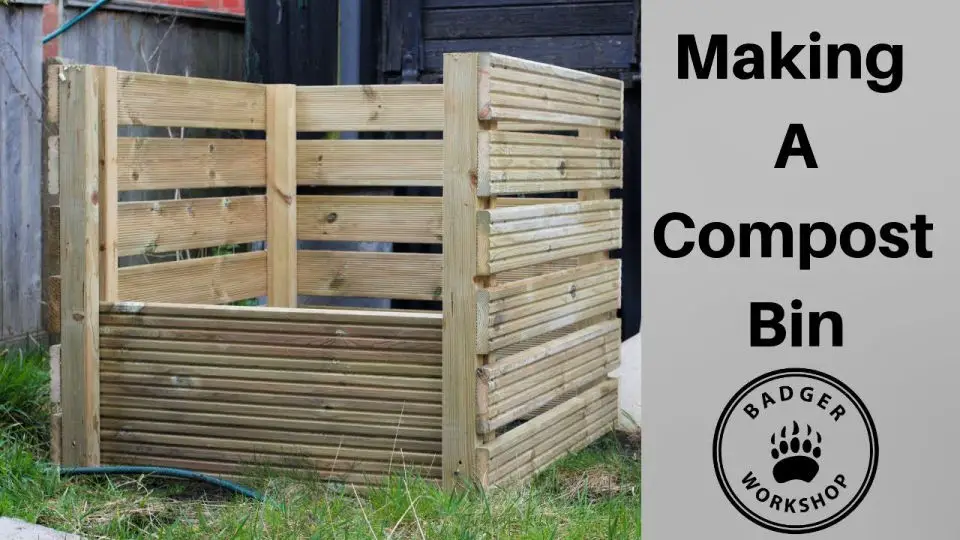
Transform your decking boards into a functional compost bin that’s perfect for recycling garden waste. To get started, cut the boards to size and assemble them using decking screws, building a sturdy structure that can withstand the elements. One of the unique features of this DIY project is the removable slats, which allow for easy access and adjustment as your compost breaks down. This design makes it simple to manage waste efficiently and maintain a healthy balance in your garden. As you tend to your compost bin, you’ll be embracing eco-friendly practices that will enhance the vitality of your garden while reducing waste.
Conclusion:
Creating a DIY compost bin is an environmentally friendly and cost-effective way to manage kitchen and garden waste. This eco-friendly approach not only benefits the environment but also enhances soil quality, making it ideal for gardening enthusiasts seeking a more sustainable lifestyle. With numerous plans available online, you can easily find a design that suits your space and requirements. This guide aims to provide easy-to-follow instructions, breaking down the process into manageable steps, to help you build a functional compost bin from scratch. By following our detailed plans, which include various designs such as the 3-bin compost system, you’ll gain clarity on every stage of the process, from material selection to final touches. Our guide also provides practical advice on maintenance, usage, and pest control, ensuring your composting journey is smooth and successful.

